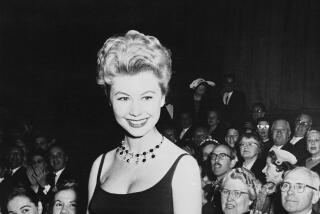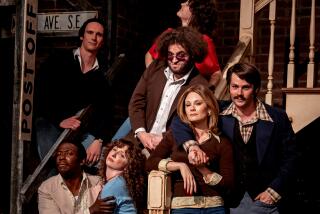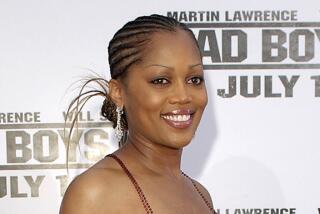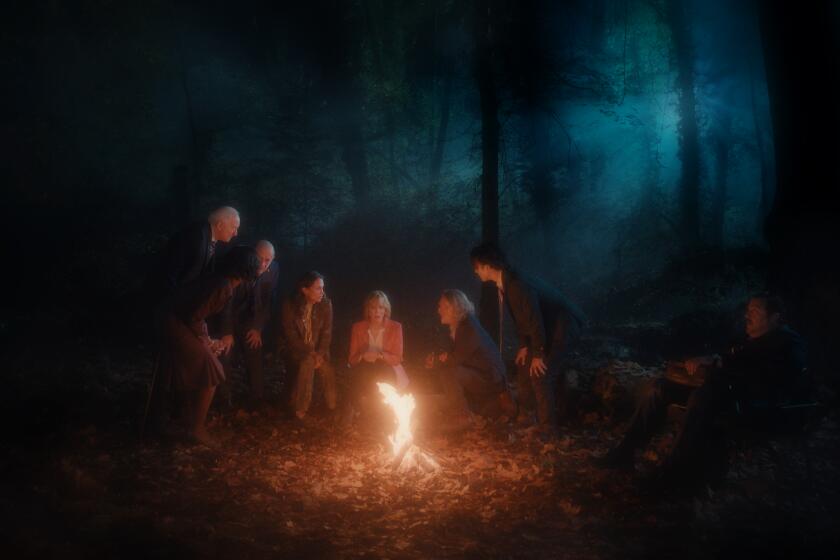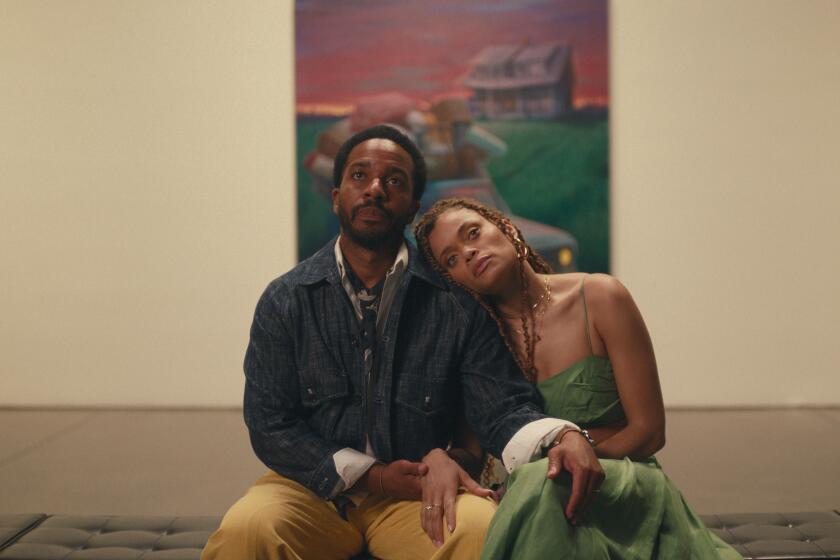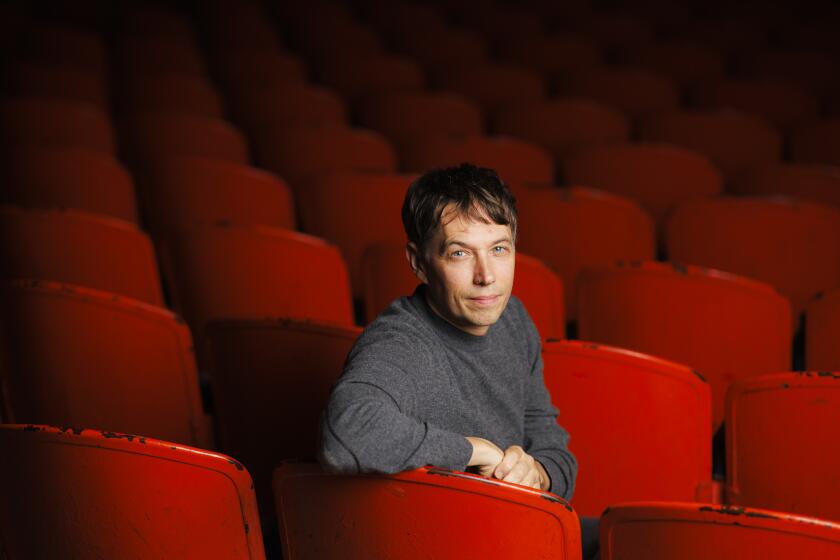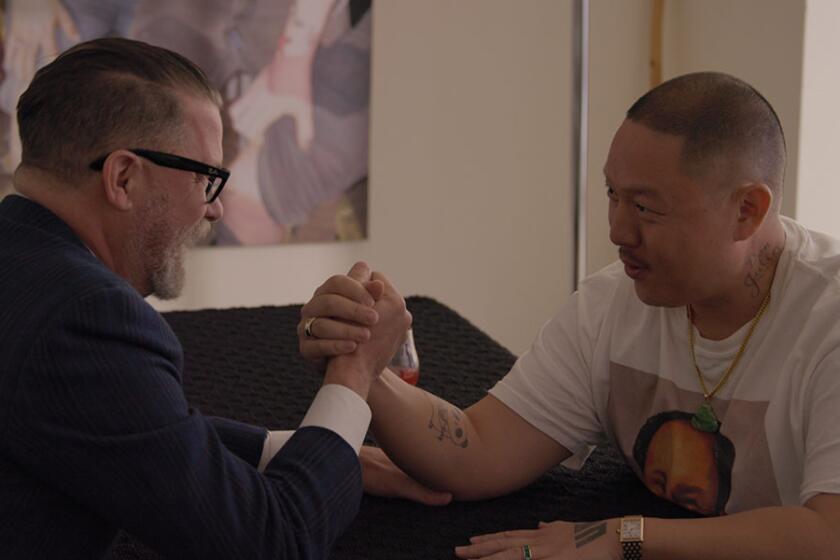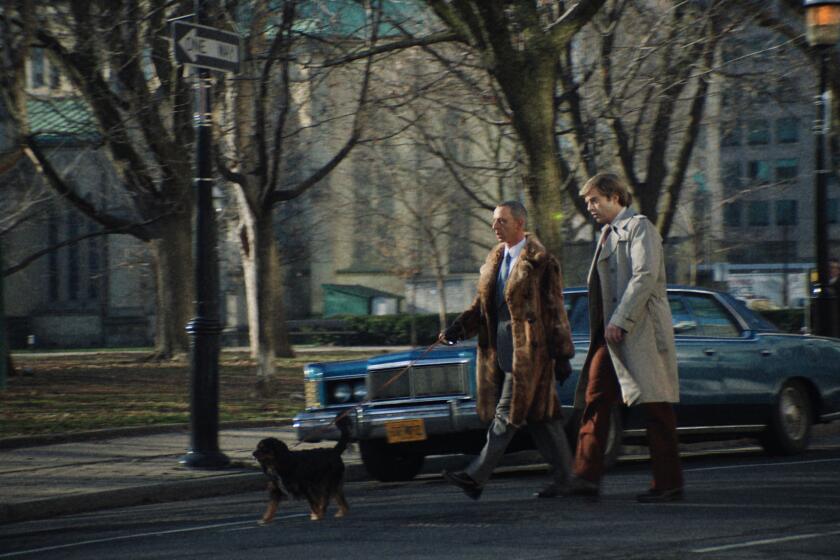Wookie Nights
On “The NBC Nightly News,” anchorman John Chancellor told viewers that if they didn’t know what a 100-year-old Wookie was, they’d learn soon enough, and noted that “he or it” was the hairy creature depicted on a photograph right behind him.
The June 13, 1977, newscast showed long lines of people standing outside movie theaters in which a new film called “Star Wars” had opened only weeks before and reported that the $9-million film was expected to make “10 times” that amount.
A reporter in the field then intoned: “It’s old-fashioned escapist entertainment, pure and simple, with no morals and no messages. And it appears this is what just about everybody in the country is in the mood for.”
The week the movie opened, Time magazine reported that kids had screamed in delight at an advance screening in San Francisco. The magazine also took note of the buzz among sci-fi fans, reporting that 6,000 color transparencies from the film were stolen from the production offices and were selling for more than $5 each.
And, driving down Wilshire Boulevard that first weekend the movie was in theaters, Sid Ganis was getting a glimpse of what was to come. As he headed with his kids at 8 o’clock on a quiet Sunday morning to see the new 20th Century Fox film, Ganis saw the street littered with trash left by fans who had stood in line for tickets Saturday night.
“There were cups and popcorn bags and food containers all over the street,” recalled Ganis, who then headed advertising at Warner Bros. “Everything else along Wilshire looked so pristine and beautiful that morning, but here was this sea of trash.”
It has been more than two decades since moviegoers sat in awe as an Imperial destroyer firing laser blasts at a smaller Rebel Alliance spacecraft appeared at the top of the screen, dramatically introducing director George Lucas’ space yarn. Two decades since moviegoers were first introduced to a strange and colorful array of characters named Luke Skywalker, Darth Vader, Princess Leia, Han Solo, the 8-foot Wookie called Chewbacca and those two humorous droids, R2-D2 and C-3PO.
But unlike today’s big action films, which arrive each summer with all the fanfare studio publicity machines can muster, the original “Star Wars” saw its success born, for the most part, from the greatest publicity machine of all: word of mouth.
In Los Angeles, librarian Victor Adagio and his wife, Heidi, recalled how they were dazzled at the film’s special effects--the kind of special effects they had not remembered seeing since Stanley Kubrick’s “2001: A Space Odyssey” nearly a decade earlier.
“What I remember most was Darth Vader and the light swords,” Heidi said. “Outside of ‘2001,’ I don’t think there had been anything like those special effects. Just to see so many flashed at you simultaneously when you had never seen anything but ‘2001’ was just mind-boggling.”
Everything about the movie seemed unique, they recounted, like the hovercraft with heat seemingly rising from the sand. “And the hovercraft was not made of bright, shiny metal,” she noted. “It looked dirty, used, like a space jalopy. Before that, all you had [in science-fiction films] were gleaming, white, pure flying saucers.”
Rick Jewell, the associate dean of USC’s School of Cinema-Television, remembered seeing crowds snaked around the block outside Mann’s Chinese Theatre in Hollywood in those first weeks.
“I remember [the theater] had already scheduled [director] William Friedkin’s film ‘Sorcerer,’ ” Jewell said. “He was a big director coming off ‘The Exorcist,’ and they had him scheduled to come in right after ‘Star Wars.’ But they had to kick ‘Star Wars’ out of there. I’m sure they were just dying because it was doing such a gangbuster business.”
Leilani McHugh of Pasadena, who with her husband attended USC’s film school at the time, recalled how she and her classmates reacted during an advance screening of “Star Wars” held on the Fox lot.
“We were sitting in the theater, and as soon as that [Imperial destroyer] first appeared, everybody broke into a cheer, yelling and screaming and just going nuts,” she said. “And we were film students. We thought we knew it all. Then here comes this thing over our heads with this sound that really shook us.”
Afterward, the college students spent hours talking about what they had just seen, only later kicking themselves for not having bought shares of Fox stock.
As it was, the price of shares in 20th Century Fox more than doubled in the month after “Star Wars” was released, and sales of “Star Wars” merchandise soared.
In Colorado, 14-year-old Dan Madsen had never heard of “Star Wars” until his older cousin, a sci-fi buff, put the youngster in his car and drove him to the local movie house and told him to stand in line. It would change Madsen forever.
“I clearly remember the culture of standing in line and the camaraderie that was created among the ‘Star Wars’ fans,” said Madsen, who today runs the film’s official fan club.
“Within three to four months, my bedroom was covered wall-to-wall with posters and newspaper articles,” he added. “I bought model kits and hung them by strings from the ceiling. We formed a local ‘Star Wars’ club and would get together every Friday night and show off our stuff. There were nine or 10 of us.
“You can imagine the kind of impression the movie had on a 14-year-old boy--that huge spacecraft, those colorful characters, all that action-adventure and that strange world. I was just enamored with it,” he said.
At schools, kids with hard-to-get “Star Wars” T-shirts would become the talk of the playgrounds. Fans proudly wore buttons handed out by theaters that read: “May the Force Be With You.”
*
Producer Tom Pollock, who in 1977 was part of an entertainment law firm that represented Lucas, said he was among those who were blown away by that first scene in the film.
“The reaction wasn’t so much by me or anyone else that, ‘Oh, my God, this is going to make a fortune,’ ” Pollock recalled. “It was, ‘Oh, wow! I didn’t know movies could do this.’ It was the movies that had changed. Seeing ‘Star Wars’ for the first time for most people was an epiphany. It wasn’t about being a good movie or a bad movie or a hit movie at the box office. It was, ‘Oh, movies can do this? If they can do this, they can do anything.’ ”
Director Jon Turteltaub (“Phenomenon”) said: “The first ‘Star Wars’ made me realize that you should never underestimate the imagination of your audience. Most films of that genre were very talky. They did a lot of explaining. George Lucas just presented his universe as a reality and the world bought it.”
Until that moment, Hollywood would regularly scoff at sci-fi buffs like Donald Reed, who ran a group called the Academy of Science Fiction, Fantasy and Horror Films.
“That film put us on the map,” Reed recalled. “No longer did we have to worry about criticism from people who would say, ‘Oh, you’re science fiction. That’s “Plan 9 From Outer Space” ’ [a reference to director Ed Wood’s 1959 cult film, which has been called the worst movie ever made].”
“Now, they showed some respect,” Reed continued. “The year 1977 was the turning point of my life. It put me on the map.” Soon, TV producers came knocking at his door asking Reed if they could telecast his annual Saturn Awards, given out to the best science-fiction films and TV shows of the year. But it went beyond that, Reed said.
“The film affected women as well as men, blacks as well as whites, Catholics as well as Protestants, every group,” Reed said. “A black kid growing up in the ghetto could identify with ‘Star Wars’ as well as the rich kid in Beverly Hills.”
Today, as Lucas prepares to release his latest film in the “Star Wars” saga--”Star Wars: Episode I The Phantom Menace”--he has instructed executives at Fox that he does not want the film to debut in 6,000 theaters, even though they could probably fill them. Instead, the new film will be released in approximately 2,800 to 3,000 theaters.
Even so, it was a dramatically different story back on Wednesday, May 25, 1977, when the original “Star Wars” made its maiden voyage.
At the time, Fox had booked the film into only 32 theaters. By the fourth weekend, it was in only 79 theaters. Not until the fifth week did the film achieve wide release in 362 theaters--a pittance by today’s standards.
“You have to remember, there weren’t as many theaters in those days,” said Tom Sherak, chairman of 20th Century Fox Domestic Film Group. “This was a movie that nobody knew about. What made this movie was the underground.”
Ray Fox, who then ran the western division of Plitt Theaters, at the time the largest independent chain of movie theaters in the country, said the popularity of “Star Wars” stunned even veteran exhibitors like him.
“I remember at one theater, the Cine Capri in Phoenix, a beautiful theater with a single screen, a real showplace, the film played there from May through the Fourth of July of the following year,” Fox marveled.
Fox also recalled that in the weeks before Lucas’ film opened, the studio’s distribution chief at the time, Ashley Boone, who has since passed away, was telling doubting exhibitors that “Star Wars” was going to break attendance records.
“Ashley and I had lunch one day and he told me, ‘This is going to be the biggest picture ever,’ ” Fox recalled. “I said, ‘Ashley, that’s a pretty big order.’ He said, ‘Ray, this film is outstanding. It’s just going to be great.’ ”
So Fox made Boone a wager. If the film became as big as he predicted, Fox would buy Boone dinner anywhere he wanted in the United States. Boone won the bet, but chose to dine at his favorite restaurant near the lot.
Meanwhile, Anthony Daniels, the British actor who has portrayed C-3PO in every “Star Wars” film, said the cast didn’t expect the film to become a cultural phenomenon.
“I actually remember ringing the manager of a Westwood theater and saying, ‘I’d kind of like to see this movie with an audience, but I don’t want to stand in line’ because I saw lines going around the block,” Daniels recalled. “I don’t think he knew who I was, because he didn’t allow me in.”
*
Freelance writer Richard Natale contributed to this story.
More to Read
Only good movies
Get the Indie Focus newsletter, Mark Olsen's weekly guide to the world of cinema.
You may occasionally receive promotional content from the Los Angeles Times.
